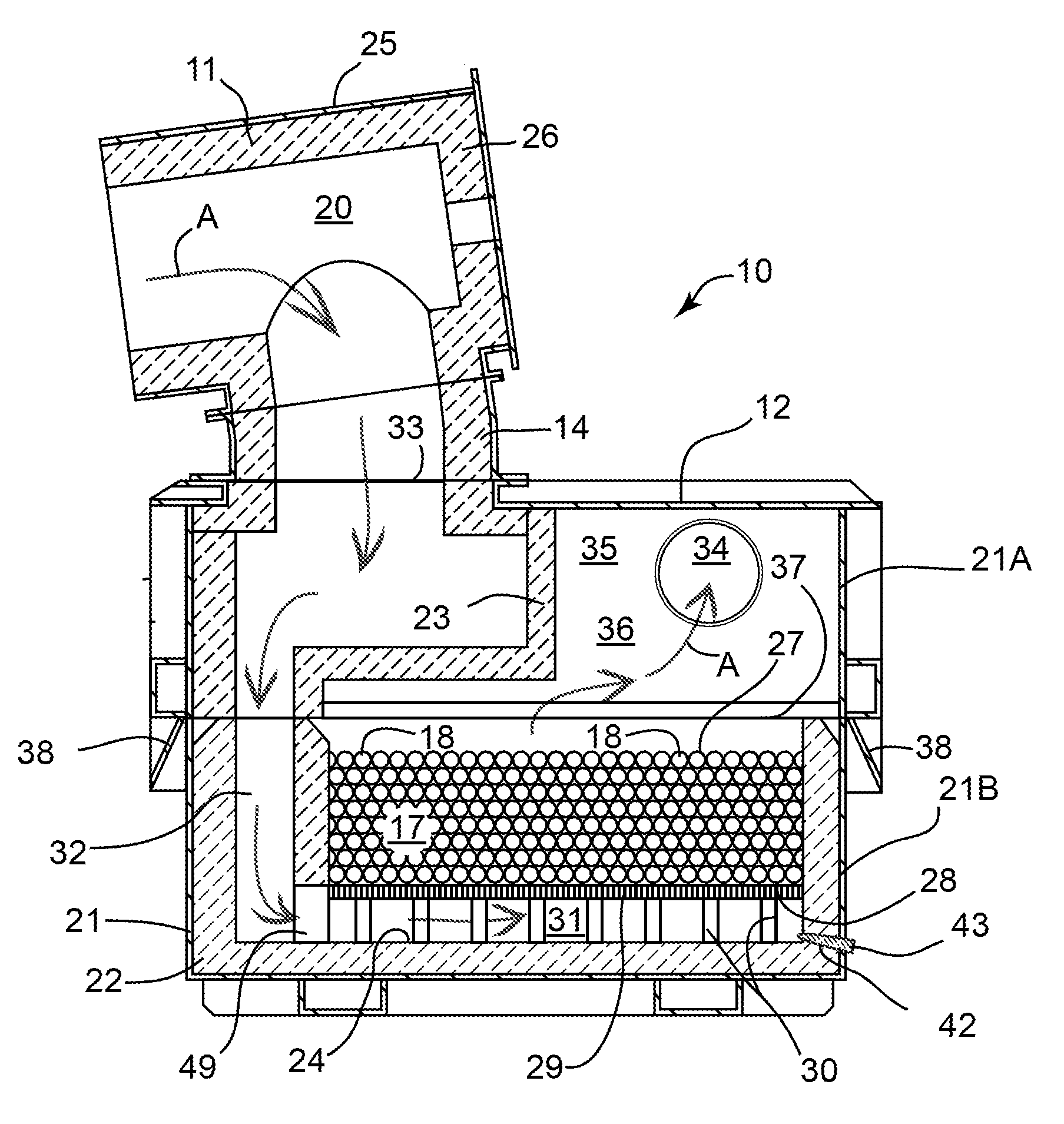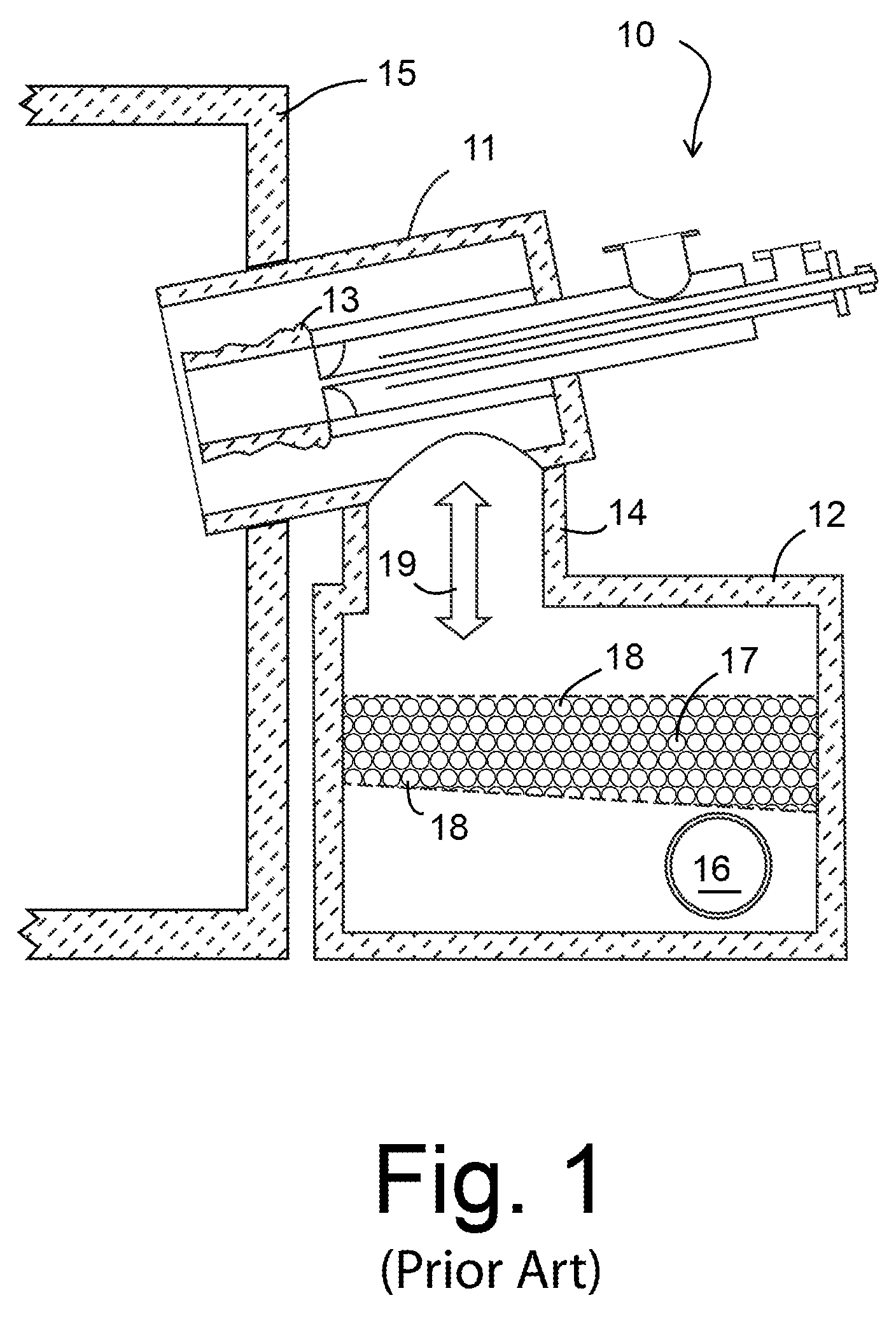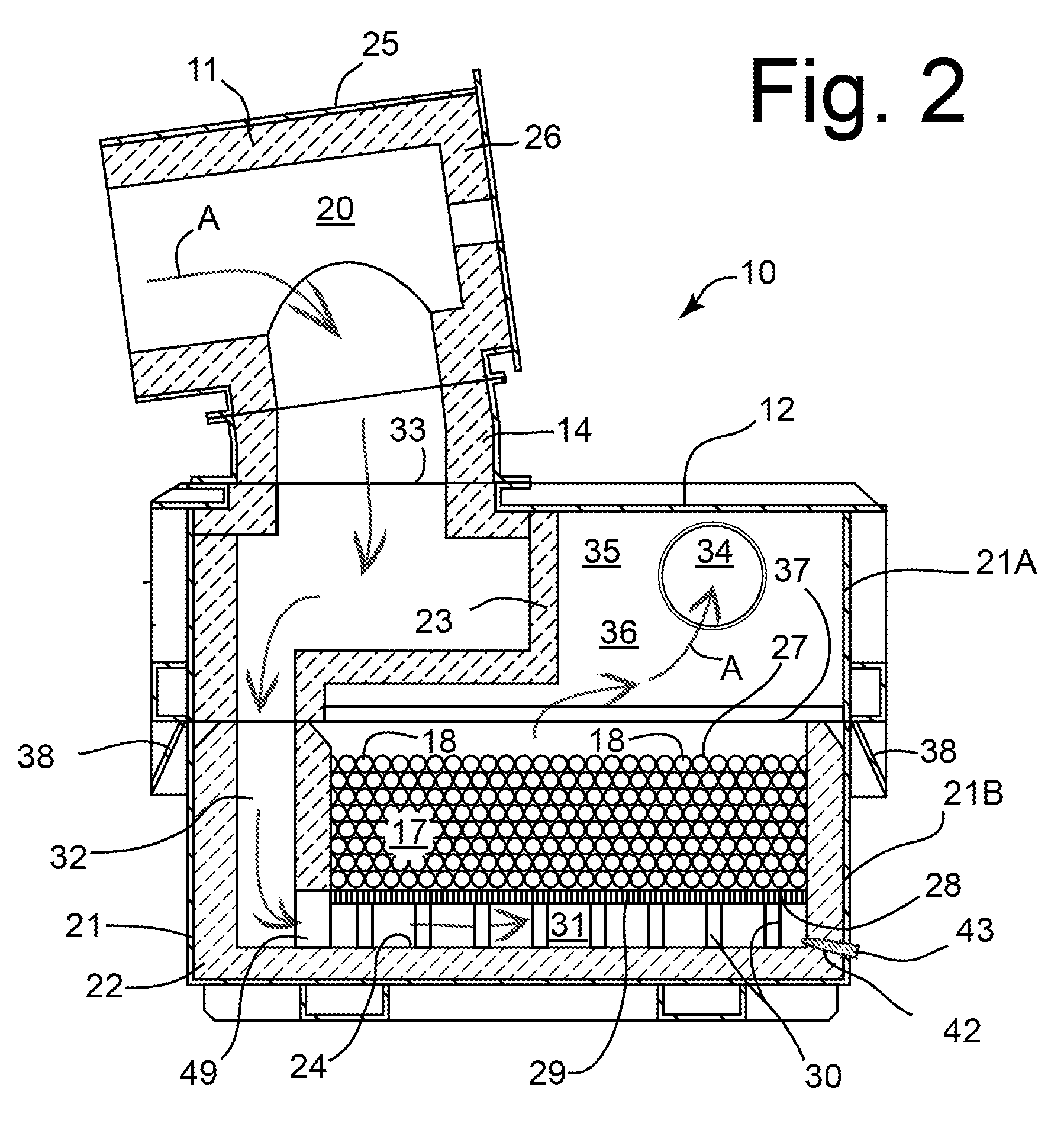Reverse flow regenerative apparatus and method
a heat-regeneration burner and reverse-flow technology, which is applied in lighting and heating apparatus, combustion types, furnaces, etc., can solve the problems of gas leakage around the media bed, if insignificant to the overall efficiency of the apparatus, and achieve the effect of increasing the width of the opening, reducing the risk of gas leakage, and increasing the cross section of solid materials
- Summary
- Abstract
- Description
- Claims
- Application Information
AI Technical Summary
Benefits of technology
Problems solved by technology
Method used
Image
Examples
Embodiment Construction
[0045]In the following description, like or equivalent elements throughout the several views of the drawings are identified by the same reference number. However, the use of a single reference number to identify elements in different views should not be taken to imply that the elements are necessarily identical. Any differences will be apparent from the description and from the drawings themselves.
[0046]FIG. 1 shows a conventional heat regenerative fuel burner apparatus of the kind shown in US publication no. 2002-0072020 A1 to Crane et al. mentioned above (the disclosure of which publication is specifically incorporated herein by this reference). As stated earlier, the illustrated burner apparatus works in conjunction with a second identical or similar apparatus. The burner apparatus is indicated generally by reference numeral 10. The apparatus includes a burner housing 11 enclosing a fuel burner 13, and a regenerator 12 interconnected to the burner housing 11 by a tubular element ...
PUM
 Login to View More
Login to View More Abstract
Description
Claims
Application Information
 Login to View More
Login to View More - R&D
- Intellectual Property
- Life Sciences
- Materials
- Tech Scout
- Unparalleled Data Quality
- Higher Quality Content
- 60% Fewer Hallucinations
Browse by: Latest US Patents, China's latest patents, Technical Efficacy Thesaurus, Application Domain, Technology Topic, Popular Technical Reports.
© 2025 PatSnap. All rights reserved.Legal|Privacy policy|Modern Slavery Act Transparency Statement|Sitemap|About US| Contact US: help@patsnap.com



